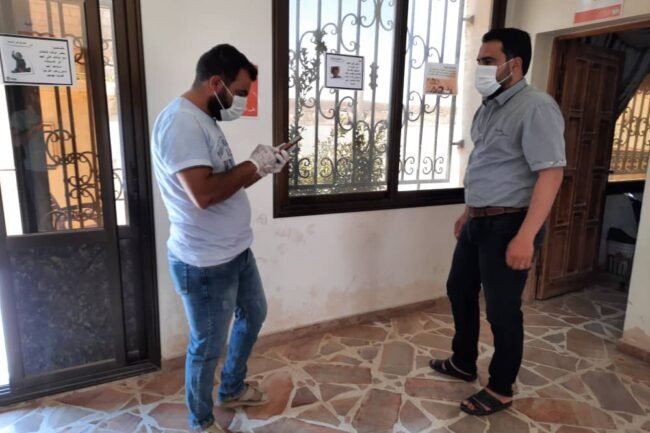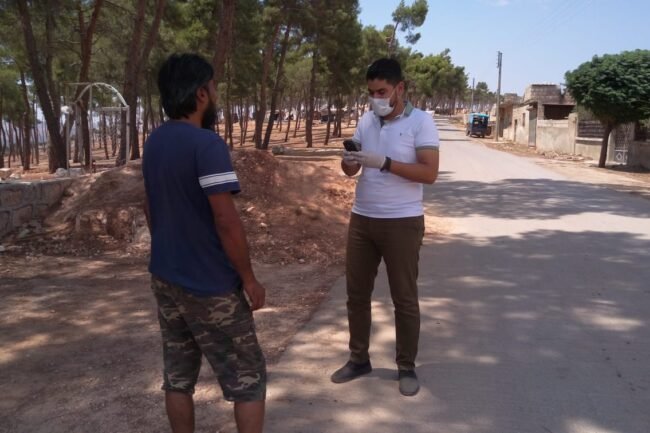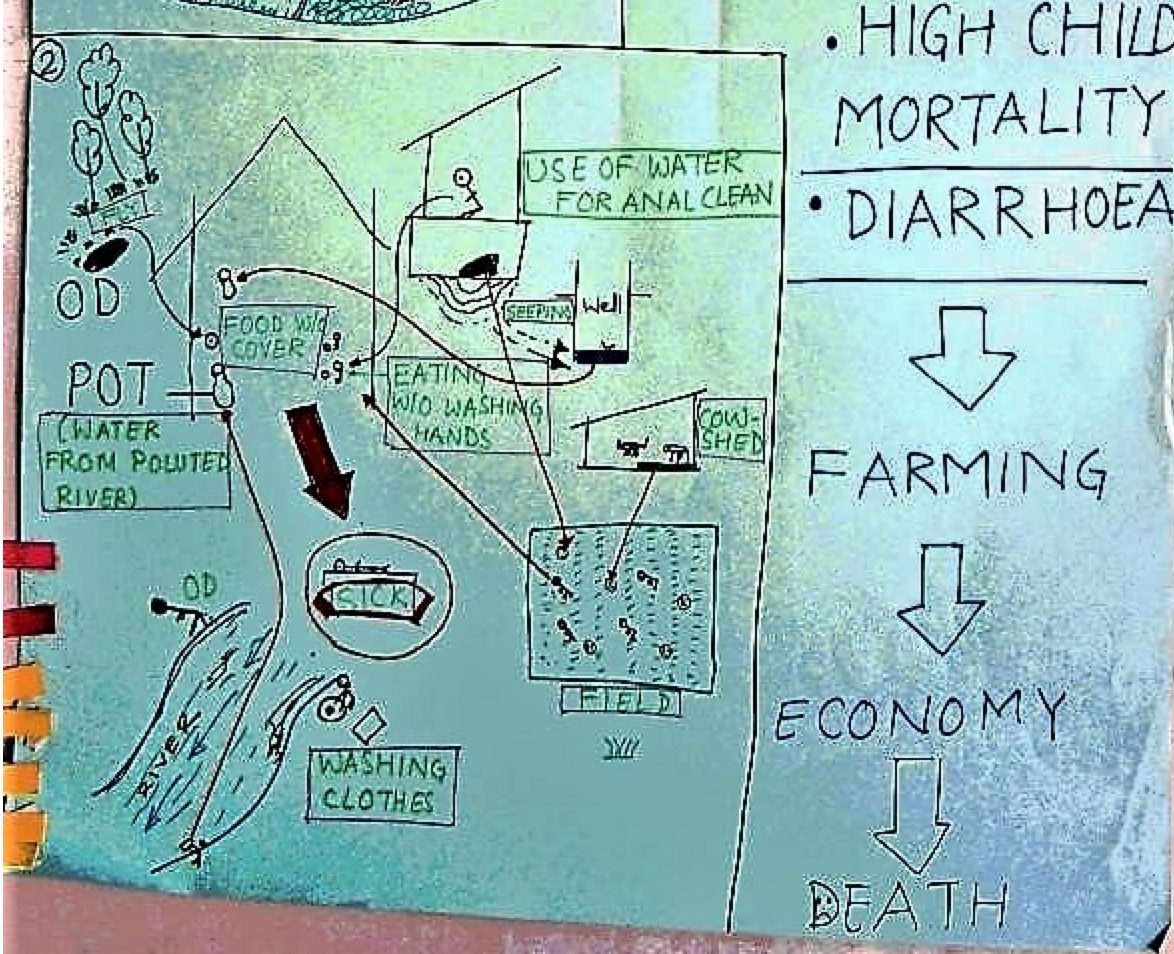The worldwide outbreak of the COVID-19 pandemic has cast a harsh light on the gaps in the safety net underpinning the delivery and implementation of humanitarian aid and development projects. The lockdown and travel restrictions required to limit its spread have delayed delivery of essential materials, sent international staff home ahead of border closures, and limited access to areas with critical needs.
At the same time, it has sent humanitarian needs soaring across sectors. Under-resourced health systems are swamped by the effects of the virus itself, and the worldwide economic shock of the shutdowns required to limit its spread are felt disproportionately by the most vulnerable. Livelihoods are threatened or eliminated, essential services are halted, and supply chain interruptions have increased costs for household necessities.

Sustainable Aid Delivery Challenged
Faced with catastrophic needs, the instinct in the aid world is to urgently channel people, resources, and supplies into the areas in need, with staff from across the globe descending from planes with containers of supplies and equipment. The complexity of the COVID-19 crisis is that in many ways this response is the opposite of best practice. Instead, lockdowns and restrictions have made the ideal response one that is hyper-local, space-limited, and community-led. In the absence of a vaccine or treatment, behavior change is the key ingredient for success in tackling the spread of the virus, which makes trust in the community an essential component of any response. As international and national organizations grapple with how best to adapt mechanisms of delivery and response, it is essential to ensure that these are not just in consultation with existing community networks but deeply rooted in and from these groups, which have the benefit of pre-established trust and the potential for long-lasting sustainability.[1]
Ensuring Localization during the Covid Crisis
We have long known the importance of prioritizing sustainability and localizing delivery mechanisms. These concepts are mainstreamed throughout the Sustainable Development Goals and Agenda 2030, and it is widely understood that good governance of these aims can only be achieved through local leadership.[2] However, too often in immediate or urgent aid response, the focus on these elements of project design and implementation is pushed down the road, deemphasized in favour of rapid interventions. The impact of coronavirus on under-empowered local communities across the world has shown the weaknesses this can reveal. In order to derive true value from these principles, sustainability and localization must be built into the structure of projects from the very beginning. These may lead to difficult choices.
It is challenging to the humanitarian mindset to reduce the amount of people who can be reached with immediate and concrete relief. Activities that target sustainability, such as training or capacity-building sessions, can feel less immediately useful and reduce the number of direct beneficiaries of a project’s funding. However, immediate and sustainable impact are not in competition. Both are essential for a project’s ability to adhere fully to the concept of do-no-harm. In a world where external factors may interrupt the implementation of funded activities at any time, projects must be designed to reinforce concrete sustainability outcomes across the scope of programming. Any funding spent on activities that do not have a sustainability focus, reduce the fighting chances for the project to achieve lasting impact.

Localized Leadership put to the Test of Cost-Effectiveness
It also requires a critical look at the backgrounds and figures who are valued as leaders in the delivery of projects. Over-prioritization of international staff is a major problem and greatly increases an organization’s risk profile. Not only may it reduce the project’s sustainability, it affects the potential achievement or non-achievement of project outcomes in the case of evacuation or repatriation. Mainstreaming sustainability and prioritizing local leadership also requires a shift in how projects are evaluated by their implementing organizations and donors or funding bodies. The price of creating truly sustainable impact for a given number of beneficiaries must be assessed in a way that gives it value equivalent to creating positive shorter-term outcomes for a larger group. Moreover, it requires a reassessment of the concept of loss and cost-effectiveness.
Funds or resources channeled into the community in productive ways cannot and should not be considered as ‘loss’, even if they do not contribute directly to achievement of other project outcomes. Needs and capacity assessments should be reexamined and designed to ensure they do not unconsciously eliminate smaller, more locally-led, and/or faith-based organizations.[3] Taking the chance to boost capacity-building or commit to technical updates and change may be a more effective dedication of resources than an in-person flow of help, and doubles as more sustainable.
Strained Funding Sources
Sustainability that starts from the first instances of emergency response also allows greater bridges to be made between initial action and long-term development plans, potentially saving resources and economizing on costly logical framework restructurings. In the example of COVID-19, this aspect is particularly clear. The ‘coronavirus crisis’ will persist even after the epidemiological outbreak ends. Ongoing contraction in local, regional, and national economies will mean that livelihoods will be devastated across the world, compounding the impact of current conflicts or emergencies. Needs will remain high as a result of these economic hardships, and the proportion of people reliant on humanitarian support will rise. This will increase the strain on national and international funding sources even as they face cuts or interruptions to fund-raising and aid allocation.
National governments under acute financial pressure may be less able to provide key services, and under-resourced and under-funded humanitarian and development programs may struggle to close gaps in service provision. Even before the acute stage of the crisis is truly over, it is clear there is a long and hard recovery ahead. Keeping one eye on these challenges ahead while we respond to the emergency of today will make these responses more equitable, effective, and sustainable, and lay the groundwork for concrete growth in years to come.
About the Author
Emer Hughes has worked in Trust’s TPM and Research department since 2018 when she joined the company as an intern. Today, Emer is a TPM and Research Project Officer who works on Trust’s numerous M&E assignments across the Middle East. She holds a master’s degree In International Public Management from Sciences Po in Paris, and she is currently based in Dublin.
_____________________________________
[1] https://www.cgdev.org/blog/humanitarian-financing-failing-covid-19-frontlines#.XvMHY9w9X7w.twitter
[2] https://www.undp.org/content/undp/en/home/news-centre/speeches/2017/localizing-the-implementation-of-the-sustainable-development-goa.html
[3] https://www.devex.com/news/opinion-the-coronavirus-response-needs-local-communities-and-faith-leaders-97147


